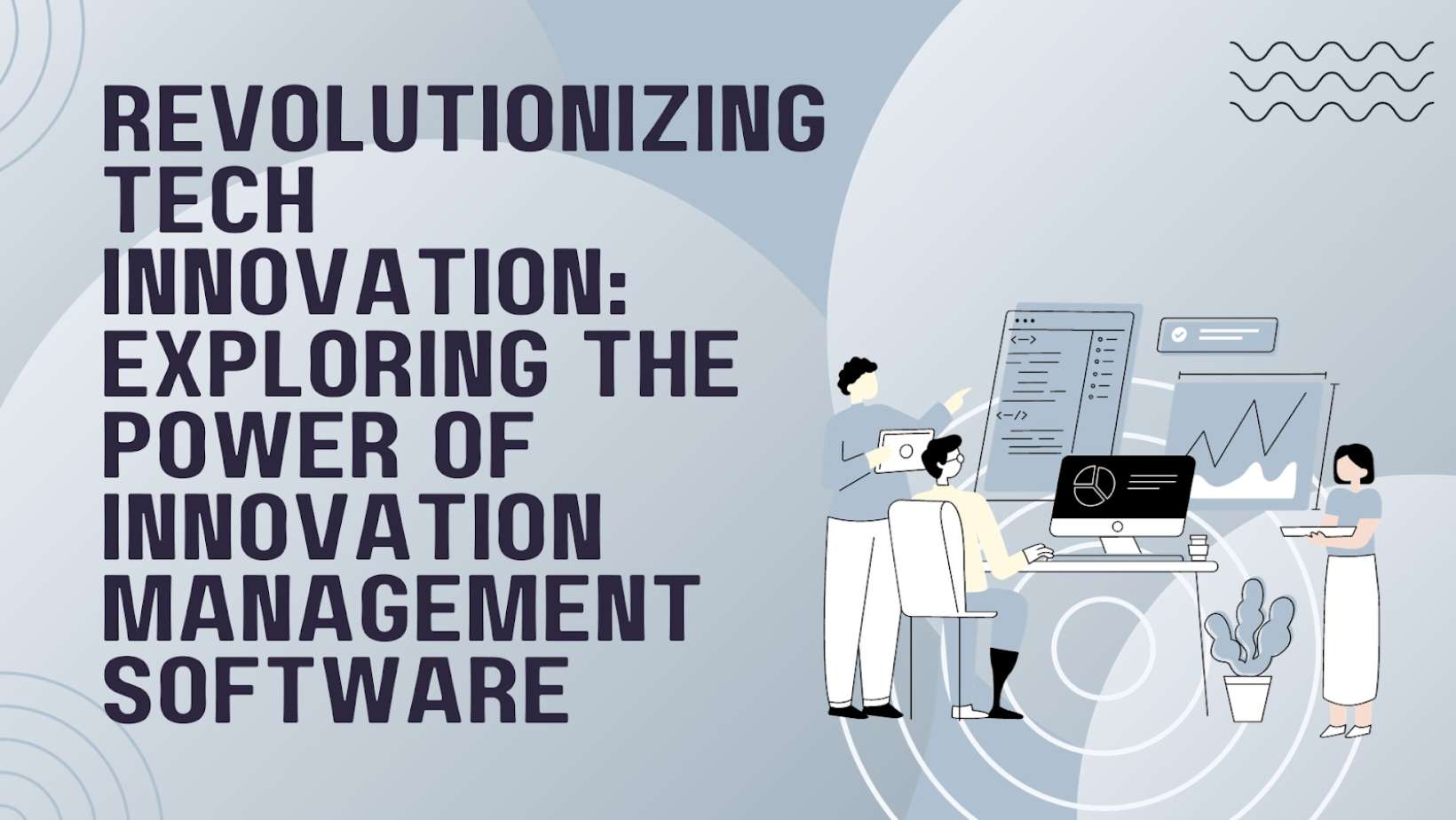In the current era, technology-driven innovation has become essential for business growth and maintaining a competitive advantage.
To spearhead innovation, companies are adopting dedicated innovation management platforms that centralize activities and transform traditional processes.
This blog unravels how software tools are revolutionizing innovation capabilities for enterprises around the world.
The Growing Priority of Tech Innovation
For companies across industries, innovation has shifted from a buzzword to an urgent priority. With technology constantly disrupting markets, businesses must continually introduce new products, services, and processes just to survive.
A 2022 survey by KPMG found that two-thirds of CEOs considered innovation investments highly important over the next three years. In 2022, U.S. companies invested a whopping $447 billion in innovation, marking a 12% increase from the previous year.
But it’s not just about the size of the budget; true innovation success requires a shift in how we approach creativity, driven by technology. That’s where innovation management software comes in, providing the structure and tools to enable this transformation.
The Limitations of Traditional Innovation Models
Legacy innovation models struggle to foster sustained, organization-wide innovation for several reasons:
- Siloed efforts: Innovation activities happen in silos across teams and units, lacking coordination.
- Unstructured processes: Informal brainstorming and occasional hackathons drive sporadic innovation.
- Limited participation: Innovation is viewed as an R&D function rather than a company-wide capability.
- Inadequate tools: Manual spreadsheets and documents hinder information sharing and tracking.
- Reactive approaches: Innovation happens as a one-off response to emerging threats and opportunities.
These fragmented models cannot deliver the volume, speed, and alignment of innovation required today. To effectively coordinate continuous, technology-driven innovation, dedicated innovation management systems are essential.
The Rise of Innovation Management Software
Innovation management platforms address the gaps in legacy models through:
Centralized Workspaces
- Provide a central hub to direct all innovation efforts rather than having fragmented initiatives across units.
- Includes repositories to store ideas, documents, prototypes, etc. in one place.
- Enables tracking of innovation pipeline from ideation to commercialization.
- Features like comments and activity feeds facilitate organization-wide collaboration.
Structured Processes
- Platforms implement structured innovation processes tailored to company needs.
- Steps like idea submission, team formation, prototype creation, customer validation, and handoff follow standardized workflows.
- Standardized playbooks guide activities like running hackathons, design sprints, and crowdsourcing campaigns.
- Automated notifications, checklists, and reminders keep processes moving smoothly.
Participation at Scale
- Easy idea submission forms and innovation contests encourage company-wide participation.
- Campaigns target participation from different groups like regional offices, business units, customer-facing teams, etc.
- Crowdsourcing at scale uncovers diverse perspectives and overlooked opportunities.
- Analytics quantify participation rates across business segments.
Data-Driven Decisions
- Platforms collect and analyze comprehensive data on innovation performance.
- Metrics on ideas generated, sources, evaluation outcomes, development velocity, product adoption, etc. provide intelligence.
- Leaders use dashboards and reporting to track ROI and alignment with goals.
- Data identifies opportunities to improve processes, training, tools, and pipelines.
Alignment with Goals
- Direct linkage between innovation portfolio and business objectives/technology roadmaps.
- Ideas mapped to specific strategic goals and platforms to prioritize development.
- Analytics track % of innovation portfolio fulfilling business goals.
- Platforms enable course correction if the portfolio becomes misaligned.
Companies gain unprecedented visibility into end-to-end processes by centralizing all innovation workstreams. Leaders can spot inefficiencies in design thinking, product development, and commercialization to enhance outcomes.

Data Source: Global Innovation Management Software Industry Report
Incorporating innovation software shifts organizations away from sporadic reliance on individual brilliance for innovation. Instead, it enables the consistent integration of innovation into their day-to-day operations.
Key Capabilities of Innovation Management Platforms
Leading solutions offer a robust set of features to accelerate innovation velocity, variety, and value:
Ideation
- Crowdsourcing and contests to collect employee ideas.
- Surveys to gather customer insights.
- Creativity triggers like random word generators.
- Analytics on contributed ideas.
Evaluation
- Custom scoring criteria to assess ideas.
- Surveys and voting tools to gather feedback.
- Portfolio analysis based on scores.
- Workflow automation for approvals.
Development
- Activity tracking for development stages.
- Collaboration via comments and mentions.
- Document sharing for designs, prototypes, etc.
- Integrations with dev tools using APIs.
Launch
- Customer testing capabilities.
- Automated handover to product teams.
- Analytics on launch outcomes.
- Archival of completed innovations.
By supporting the end-to-end lifecycle, these platforms multiply innovation throughput and success rates.
Real-World Innovation Powered by Software
Leading global organizations across sectors use innovation software to achieve tangible results:
- PepsiCo accelerated new product development by 65% using an innovation management system for their Creations hub.
- NASA launched the NASA@WORK platform across centers to solicit technology ideas from employees. Top projects get funding and mentorship.
- Raytheon saw a 4X increase in patentable ideas via innovation software idea harvesting.
- Chipotle developed an automated reporting system to analyze and action feedback from their innovation platform.
- KraftHeinz increased new product revenue by 20% after centralizing innovation on a dedicated platform.
The software-driven approach lets enterprises tap into collective knowledge at scale to commercialize the best ideas.
Key Benefits of Innovation Management Systems
Dedicated innovation platforms generate multifaceted impact from ideation to execution:
- Increased innovation productivity: Structured workflows result in more ideas progressing further with higher ROI.
- Greater employee engagement: Crowdsourcing and contests incentivize broad participation across units.
- Enhanced decision-making: Analytics on idea pipeline and outcomes guide better innovation investments.
- Tighter alignment: Platforms align innovation portfolios with business goals and technology roadmaps.
- Improved ideation: Integrated creativity tools like design thinking templates enhance ideation.
- Faster commercialization: Streamlined development and launch processes accelerate speed to market.
- Stronger IP protection: Central archival of ideas provides documentation to strengthen legal protection.
As innovation scales across the enterprise, these collective benefits add up to generating earlier, better, and faster technology-powered ideas.
Getting Started With Innovation Management Software
Here are the best practices for organizations adopting dedicated innovation platforms:
- Define innovation methodology: Set up processes for idea submission, evaluation, and selection tailored to your needs.
- Integrate with existing tools: Leverage APIs to connect innovation software with design, collaboration, and engineering tools.
- Train employees: Educate all employees on submitting ideas and using innovation features. Incentivize engagement.
- Start small: Pilot the platform with a core innovation team before expanding organization-wide. Review lessons learned.
- Realign teams: Repurpose R&D teams from project execution to guiding innovation platform use.
- Analyze data: Track idea submission rates, sources, evaluation data, and launch outcomes to refine strategies.
With the right foundation, innovation technology investments can transform how enterprises ideate, develop, and deliver new tech-driven offerings.
Frequently Asked Questions

What types of companies use innovation management software?
Companies across all industries and sizes use these platforms, especially technology firms, manufacturers, consumer products, pharmaceuticals, and financial services.
What are the typical pricing models?
Pricing depends on the vendor, user base size, and required capabilities. Many vendors offer monthly subscription plans with flat or tiered pricing based on the number of users.
Can the software integrate with our existing tools?
Leading solutions offer APIs and integrations with common tools like Slack, JIRA, Figma, and more. Custom integrations can also be built.
Who manages the innovation platform?
A dedicated innovation team oversees the program, platform use, and integrations. All employees submit ideas and participate in activities.
How long does it take to implement these systems?
Implementation timelines range from 2-3 months for lightweight deployments to 6+ months for robust customizations, integrations, and change management.
Supercharging Innovation for the Digital Age
As technology reshapes industries, companies need to embrace innovation at speed and scale to stay competitive. Innovation management software provides the structure to move beyond isolated efforts and haphazard processes.
With strategy and commitment, these platforms enable organizations to embed consistent, high-speed innovation across the entire company. The result is a continuous flow of technology-powered ideas that drive business growth.
See Also: 7 Benefits of Adopting Innovation Accounting in Business Development










